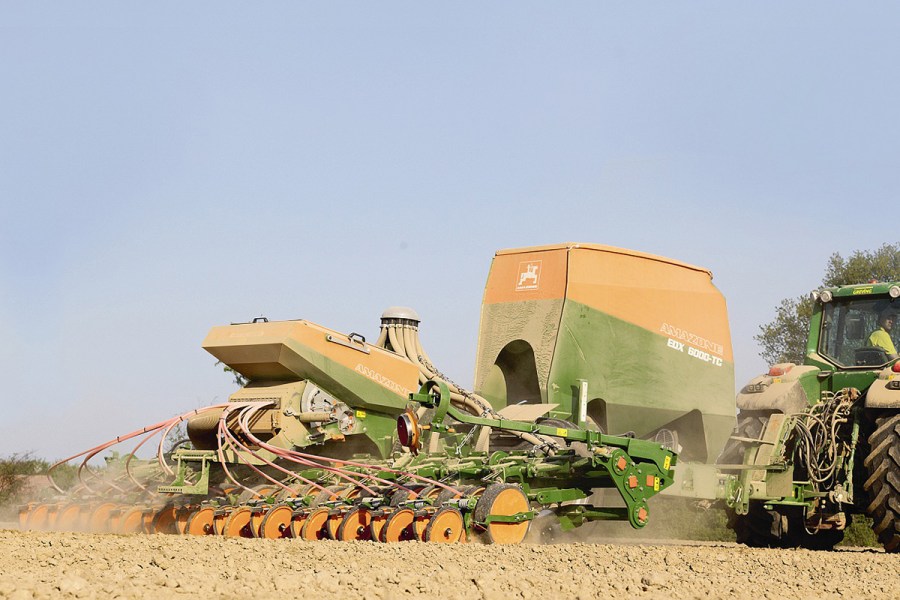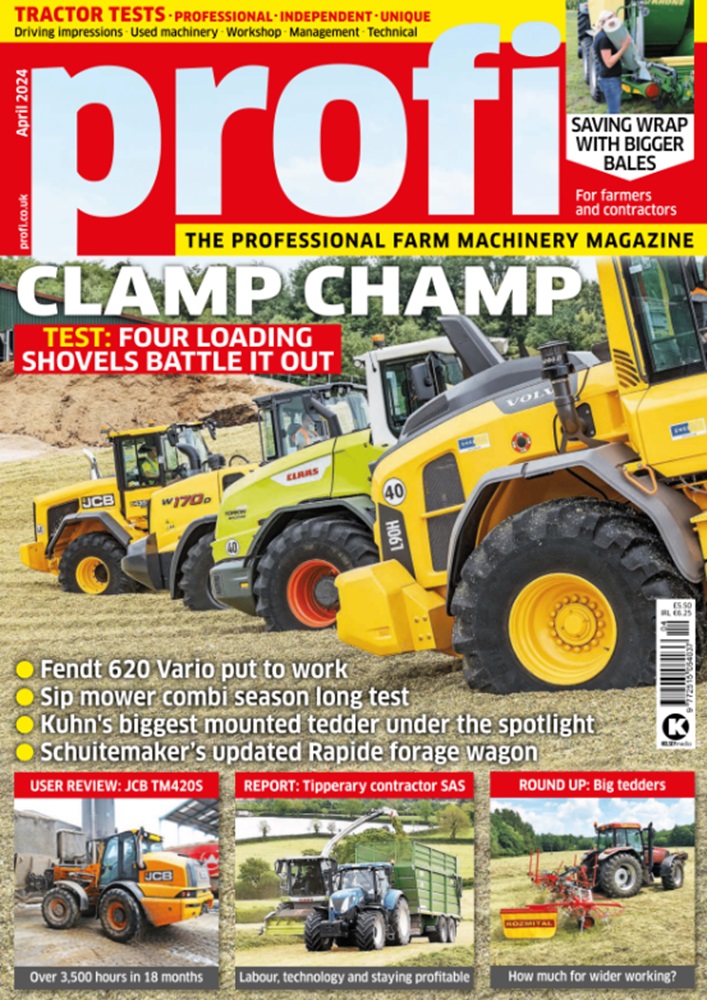Back in 2007 Amazone introduced its Xpress system. This moved away from the traditional precision seeder concept, instead using a single central hopper with integral drum-based seed singling. The result was a Gold Medal at that year’s Agritechnica. Last season we took a hard look at the 6m trailed 6000-TC
C ontractors and growers big into maize might well like the look of Amazone’s EDX-series drills. Designed to travel faster than conventional precision seeders, work rate increases of 30%-50% are claimed.
Given the right conditions these machines can rattle along at 15km/hr — double the top whack of traditional kit. So what’s different about Xpress seeding? If you’ve not seen it before, pictures on the following pages show just what’s what. In essence, a drum runs below and behind a central seed hopper. The drum carries bands of perforations, one for each drill row.
Seed flows to the base of the revolving drum, where air pressure fixes an individual seed into each perforation. The drum turns, carrying seeds upwards past stripper fingers that sort out any doubles. As an individual seed is carried over the top, a separate air blast picks it off the drum and fires it down a tube to an unusual coulter unit. Here double disc coulters open a furrow, which is then shaped by a fixed former to a rectangular cross-section and firmed. The seed arrives in this channel, is decelerated and pressed into the furrow bottom by a catcher roller.
Finally, V-form wheels cover the seed and consolidate. Wide wheels on either side of each unit control depth. It’s one thing to look at an emerging crop and reckon the drill did a good job, another to measure what’s actually happened. The latter is the way to go for profi, so we asked the DLG to assess the EDX 6000-TC unit’s performance in the lab and field. The table ‘Accuracy: seed placement and spacing’ sums up its findings.
[Download the PDF to read the rest of this article in full]
For more up-to-date farming news click here and subscribe now to profi and save






